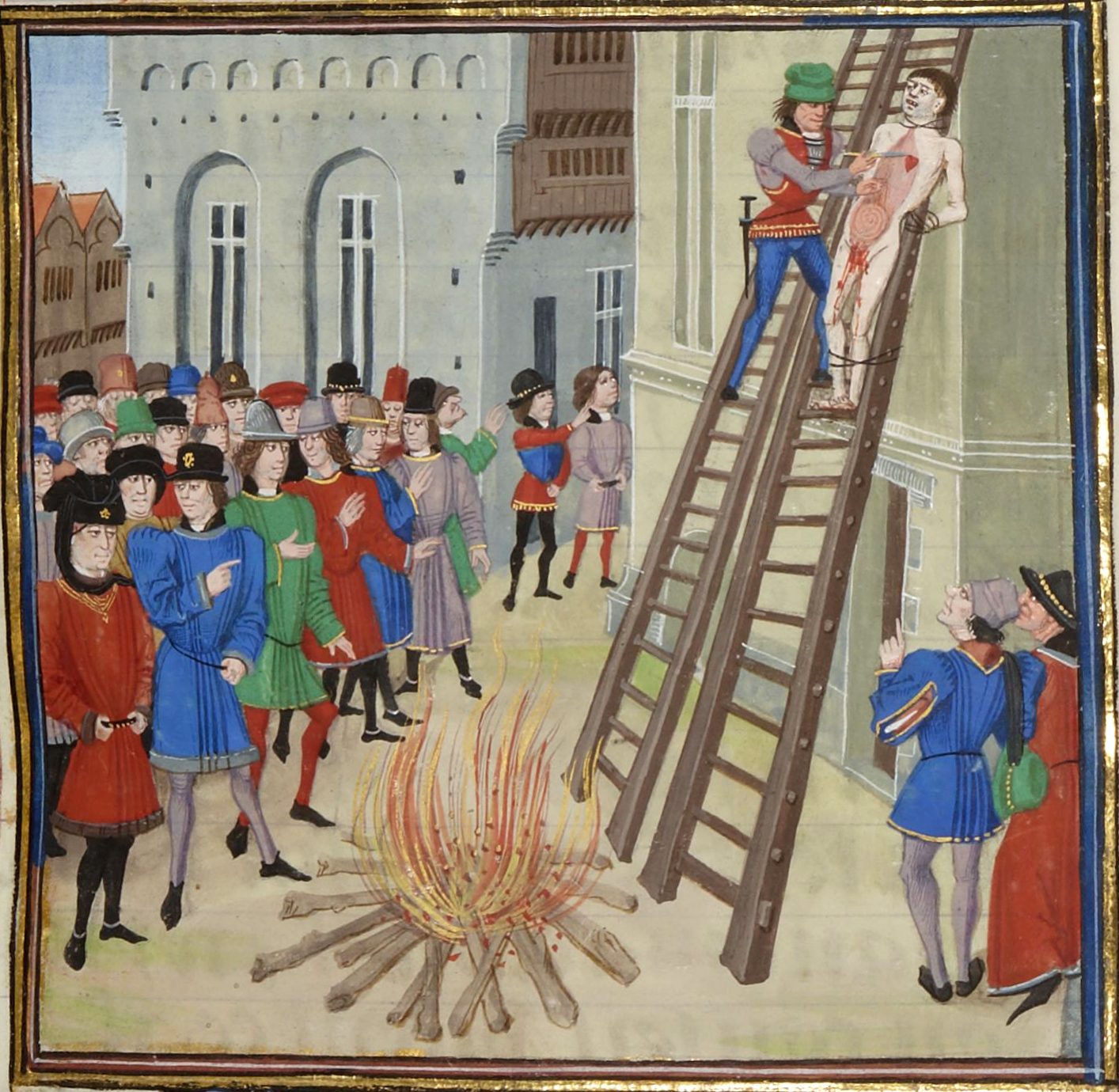Description
To be hanged, drawn and quartered was a method of torturous capital punishment used principally to execute men convicted of high treason in medieval and early modern Britain and Ireland. The convicted traitor was fastened by the feet to a hurdle, or wooden panel, and drawn behind a horse to the place of execution, where he was then hanged, emasculated, disembowelled, beheaded, and quartered. His remains would then often be displayed in prominent places across the country, such as London Bridge, to serve as a warning of the fate of traitors. The punishment was only ever applied to men; for reasons of public decency, women convicted of high treason were instead burned at the stake.







